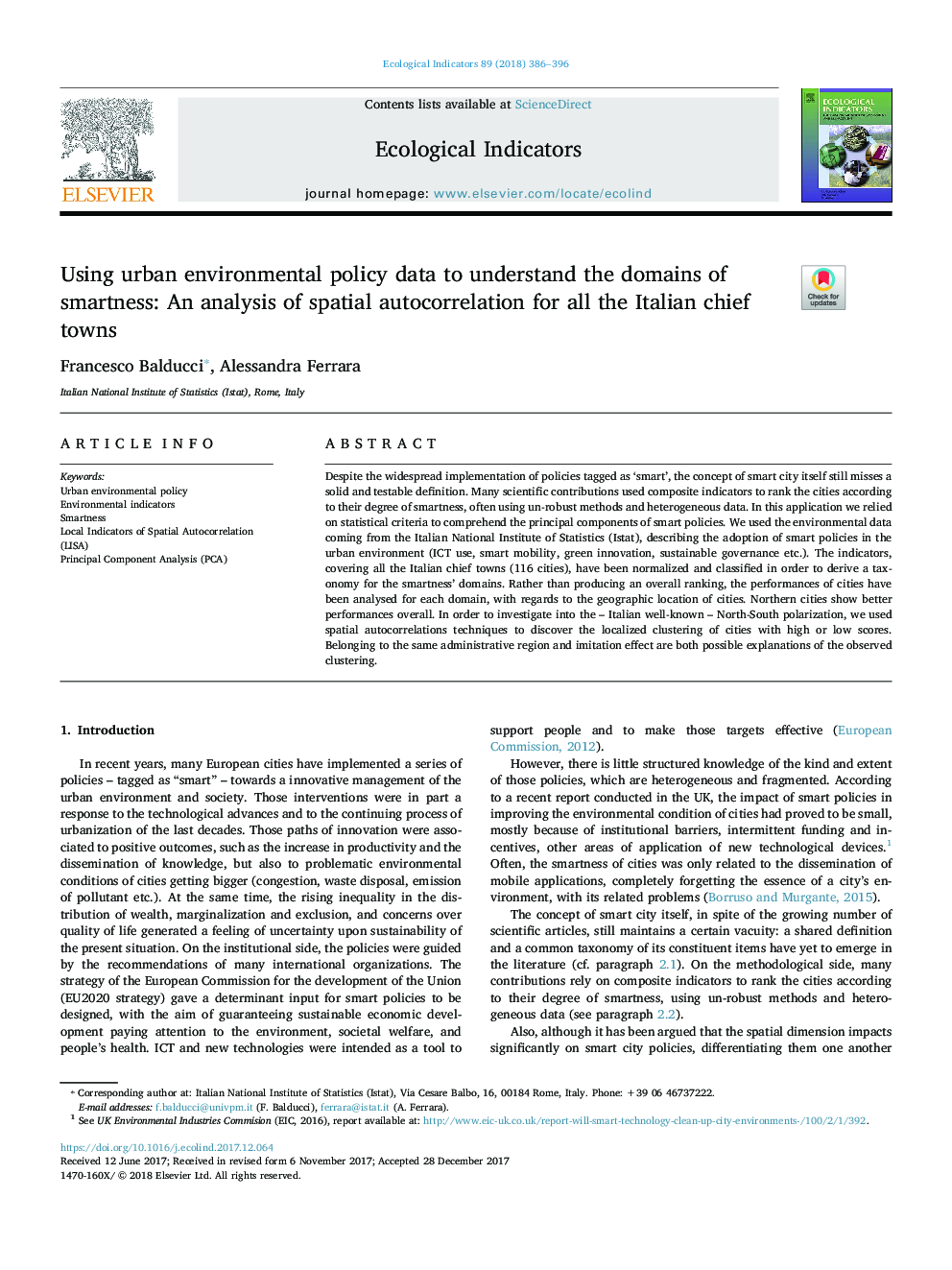| Article ID | Journal | Published Year | Pages | File Type |
|---|---|---|---|---|
| 8845480 | Ecological Indicators | 2018 | 11 Pages |
Abstract
Despite the widespread implementation of policies tagged as 'smart', the concept of smart city itself still misses a solid and testable definition. Many scientific contributions used composite indicators to rank the cities according to their degree of smartness, often using un-robust methods and heterogeneous data. In this application we relied on statistical criteria to comprehend the principal components of smart policies. We used the environmental data coming from the Italian National Institute of Statistics (Istat), describing the adoption of smart policies in the urban environment (ICT use, smart mobility, green innovation, sustainable governance etc.). The indicators, covering all the Italian chief towns (116 cities), have been normalized and classified in order to derive a taxonomy for the smartness' domains. Rather than producing an overall ranking, the performances of cities have been analysed for each domain, with regards to the geographic location of cities. Northern cities show better performances overall. In order to investigate into the - Italian well-known - North-South polarization, we used spatial autocorrelations techniques to discover the localized clustering of cities with high or low scores. Belonging to the same administrative region and imitation effect are both possible explanations of the observed clustering.
Related Topics
Life Sciences
Agricultural and Biological Sciences
Ecology, Evolution, Behavior and Systematics
Authors
Francesco Balducci, Alessandra Ferrara,
